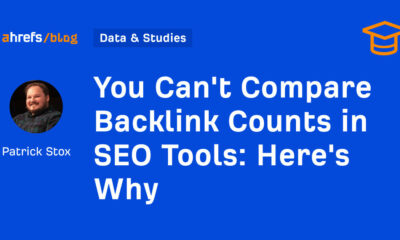SOCIAL
Twitter’s Set to Free-Up Unused Twitter Handles, Add Up-Front View Counts to Tweets

It’s Friday, so it’s time to check in on what’s happening at Elon’s ‘Twitter 2.0’ this week.
Musk has slowed his declarations of late, with Twitter’s upcoming $8 verification plan still in development, and other updates being worked through by Twitter’s reduced engineering team.
But there have been a few, smaller updates announced that Twitter now has in the works, which could be of interest.
First off, Musk says that Twitter will soon free up dormant accounts, making many @handles available once again:
Twitter will soon start freeing the name space of 1.5 billion accounts
— Elon Musk (@elonmusk) December 9, 2022
Musk flagged this a few weeks back, noting that Twitter just needed to work out how to deal with accounts of deceased users that should possibly be memorialized in some way. It’s unclear if that’s still part of the plan, but it seems like a whole lot of Twitter handles are about to be re-released back to users.
So if there’s a handle that you’ve had your eye on, and it’s been inactive forever, it may be worth paying attention, and seeing if you can snap it up once the shift is officially announced.
On another front, Musk has reiterated that Twitter will soon show view counts on tweets, as a means to highlight engagement levels in the app.
Tweets will show view count in a few weeks, just like videos do. Twitter is much more alive than people think.
— Elon Musk (@elonmusk) December 9, 2022
Elon says that people’s tweets are actually reaching a lot more people than they probably think. The view here is that if Twitter can highlight the true levels of tweet exposure, that will show users that there’s more activity than their like and retweet counts would suggest, which could get people tweeting more often, because they’ll know that they’re getting some attention, even if people don’t feel compelled to interact.
But I don’t know.
Twitter’s actually experimented with this a few times in the past, notably in 2014, 2017, and in September this year, when it launched a live test of the view count display with some users.
As you can see in this example, the update will display actual tweet reach metrics, which you can already view in the separate tweet analytics tab, up front, alongside likes and retweet counts.
So, instead of thinking that people are seeing your tweets and not engaging with them because they’re just not interested, you’d actually know this for sure. Which is probably not the intended aim of this display, but it’s hard to see how knowing that 2k people saw your tweet, and none of them engaged, might act as a motivator for you to keep sharing your thoughts in the app.
Which is likely why Twitter’s never gone with this in the past – but under Elon Musk, who’s clearly a very big fan of attention, they’re trying it again, because for Elon, knowing that a million people are being shown his comments is a big deal.
It might not be for everyone else – but then again, maybe by knowing that you are actually reaching a lot more people than the like and retweet figures suggest, that will help you revise and refine your tweet approach, in order to improve engagement and response.
App researcher Jane Manchun Wong has shared two images of what the new view counts might look like (left, in the app and right, on the web), based on current testing:

On another front, Elon has also spent considerable time tweeting about the ‘Twitter Files’ expose that he’s overseeing, in which he’s working with selected journalists to uncover perceived political bias and suppression under previous management at the app.
Which I’m not going into. The concerns highlighted in these reports are, at the least, being sensationalized via selective reporting, while the lack of access to the full data chain makes it impossible to clarify exactly what’s happened in each case, and how Twitter staff came to their decisions.
It’s seemingly another way to spark more attention, and get more people using Twitter – which, evidently, is working for Musk, who keeps saying that Twitter usage it at all-time highs. As such, they’ll likely keep pumping out attention-grabbing headlines and stories as a PR exercise.
But I will say that the Twitter Files reports haven’t revealed anything new, or necessarily nefarious, as yet.
Though they could result in more insight about restrictions impacting your tweets:
Twitter is working on a software update that will show your true account status, so you know clearly if you’ve been shadowbanned, the reason why and how to appeal
— Elon Musk (@elonmusk) December 9, 2022
That could be handy, and would provide more transparency moving forward, which could also help to ensure that users better understand any such restrictions, and help keep the conversation more civil and welcoming.
We’ll have to wait and see what happens, but really, the next big step is the re-launch of Twitter’s $8 verification plan, which will either see massive take-up and be a savior for the app, or it won’t.
We’ll likely find out soon.
SOCIAL
Snapchat Explores New Messaging Retention Feature: A Game-Changer or Risky Move?

In a recent announcement, Snapchat revealed a groundbreaking update that challenges its traditional design ethos. The platform is experimenting with an option that allows users to defy the 24-hour auto-delete rule, a feature synonymous with Snapchat’s ephemeral messaging model.
The proposed change aims to introduce a “Never delete” option in messaging retention settings, aligning Snapchat more closely with conventional messaging apps. While this move may blur Snapchat’s distinctive selling point, Snap appears convinced of its necessity.
According to Snap, the decision stems from user feedback and a commitment to innovation based on user needs. The company aims to provide greater flexibility and control over conversations, catering to the preferences of its community.
Currently undergoing trials in select markets, the new feature empowers users to adjust retention settings on a conversation-by-conversation basis. Flexibility remains paramount, with participants able to modify settings within chats and receive in-chat notifications to ensure transparency.
Snapchat underscores that the default auto-delete feature will persist, reinforcing its design philosophy centered on ephemerality. However, with the app gaining traction as a primary messaging platform, the option offers users a means to preserve longer chat histories.
The update marks a pivotal moment for Snapchat, renowned for its disappearing message premise, especially popular among younger demographics. Retaining this focus has been pivotal to Snapchat’s identity, but the shift suggests a broader strategy aimed at diversifying its user base.
This strategy may appeal particularly to older demographics, potentially extending Snapchat’s relevance as users age. By emulating features of conventional messaging platforms, Snapchat seeks to enhance its appeal and broaden its reach.
Yet, the introduction of message retention poses questions about Snapchat’s uniqueness. While addressing user demands, the risk of diluting Snapchat’s distinctiveness looms large.
As Snapchat ventures into uncharted territory, the outcome of this experiment remains uncertain. Will message retention propel Snapchat to new heights, or will it compromise the platform’s uniqueness?
Only time will tell.
SOCIAL
Catering to specific audience boosts your business, says accountant turned coach

While it is tempting to try to appeal to a broad audience, the founder of alcohol-free coaching service Just the Tonic, Sandra Parker, believes the best thing you can do for your business is focus on your niche. Here’s how she did just that.
When running a business, reaching out to as many clients as possible can be tempting. But it also risks making your marketing “too generic,” warns Sandra Parker, the founder of Just The Tonic Coaching.
“From the very start of my business, I knew exactly who I could help and who I couldn’t,” Parker told My Biggest Lessons.
Parker struggled with alcohol dependence as a young professional. Today, her business targets high-achieving individuals who face challenges similar to those she had early in her career.
“I understand their frustrations, I understand their fears, and I understand their coping mechanisms and the stories they’re telling themselves,” Parker said. “Because of that, I’m able to market very effectively, to speak in a language that they understand, and am able to reach them.”Â
“I believe that it’s really important that you know exactly who your customer or your client is, and you target them, and you resist the temptation to make your marketing too generic to try and reach everyone,” she explained.
“If you speak specifically to your target clients, you will reach them, and I believe that’s the way that you’re going to be more successful.
Watch the video for more of Sandra Parker’s biggest lessons.
SOCIAL
Instagram Tests Live-Stream Games to Enhance Engagement

Instagram’s testing out some new options to help spice up your live-streams in the app, with some live broadcasters now able to select a game that they can play with viewers in-stream.
As you can see in these example screens, posted by Ahmed Ghanem, some creators now have the option to play either “This or That”, a question and answer prompt that you can share with your viewers, or “Trivia”, to generate more engagement within your IG live-streams.
That could be a simple way to spark more conversation and interaction, which could then lead into further engagement opportunities from your live audience.
Meta’s been exploring more ways to make live-streaming a bigger consideration for IG creators, with a view to live-streams potentially catching on with more users.
That includes the gradual expansion of its “Stars” live-stream donation program, giving more creators in more regions a means to accept donations from live-stream viewers, while back in December, Instagram also added some new options to make it easier to go live using third-party tools via desktop PCs.
Live streaming has been a major shift in China, where shopping live-streams, in particular, have led to massive opportunities for streaming platforms. They haven’t caught on in the same way in Western regions, but as TikTok and YouTube look to push live-stream adoption, there is still a chance that they will become a much bigger element in future.
Which is why IG is also trying to stay in touch, and add more ways for its creators to engage via streams. Live-stream games is another element within this, which could make this a better community-building, and potentially sales-driving option.
We’ve asked Instagram for more information on this test, and we’ll update this post if/when we hear back.
-

 SEO7 days ago
SEO7 days agoGoogle Limits News Links In California Over Proposed ‘Link Tax’ Law
-

 SEARCHENGINES6 days ago
SEARCHENGINES6 days agoGoogle Core Update Volatility, Helpful Content Update Gone, Dangerous Google Search Results & Google Ads Confusion
-

 SEO6 days ago
SEO6 days ago10 Paid Search & PPC Planning Best Practices
-

 MARKETING6 days ago
MARKETING6 days ago2 Ways to Take Back the Power in Your Business: Part 2
-

 MARKETING5 days ago
MARKETING5 days ago5 Psychological Tactics to Write Better Emails
-

 SEARCHENGINES5 days ago
SEARCHENGINES5 days agoWeekend Google Core Ranking Volatility
-

 PPC7 days ago
PPC7 days agoCritical Display Error in Brand Safety Metrics On Twitter/X Corrected
-

 MARKETING6 days ago
MARKETING6 days agoThe power of program management in martech














You must be logged in to post a comment Login